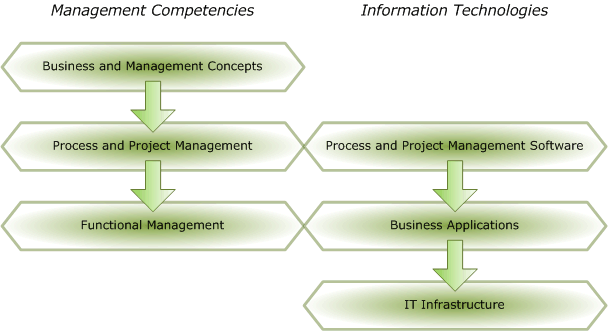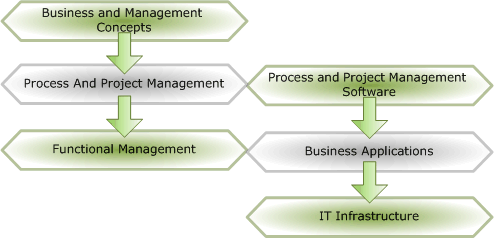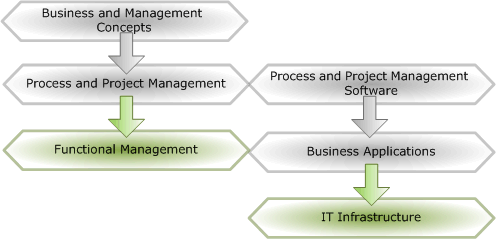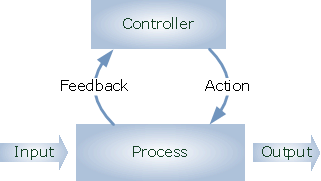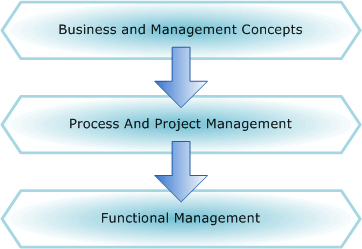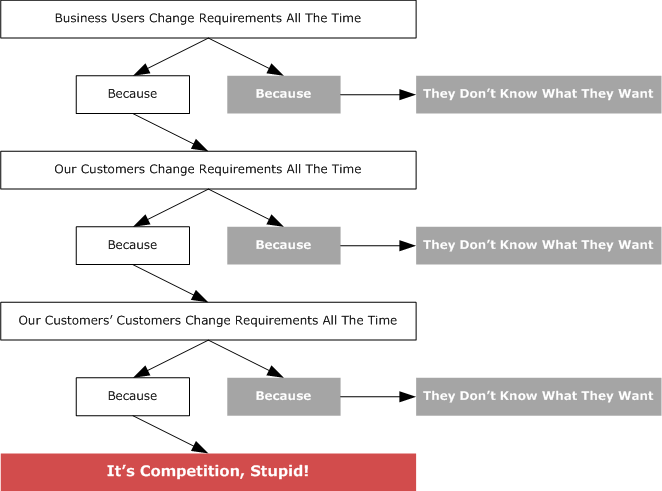(This post adds to proposed concept of management competence stack.)
Holy Grail of BPM is so-called bridging (or closing) the gap between business and IT. The gap means a situation where business submits requirements which are fuzzy from IT point of view, IT implements them as good as it can, but eventually, after some months, business gets not what was expected.
BPM copes with this problem by:
- directly executable business processes diagrams ( “What You See Is What You Run”)
- rapid prototyping and short development cycles
This way BPM closes the gap at technology and methodology levels. But what should we do with the gap in consulting practices? To date, business consultants and IT consultants are isolated and have little understanding of each other.
To be fair, IT consultants try to repeat some of business consulting casts, which sounds like: “The SOA solutions delivered by XYZ company increase business agility and adds to business competitive advantage!” But it impresses only IT guys at the customer’s side. As for the business people, such motto causes confusion at best.
It’s reasonable to expect that BPM consultants (BP Experts as SAP calls them) will resolve this issue. Three consulting levels (IT, BPM, business) overlapping each other fully cover the corporate competencies matrix:
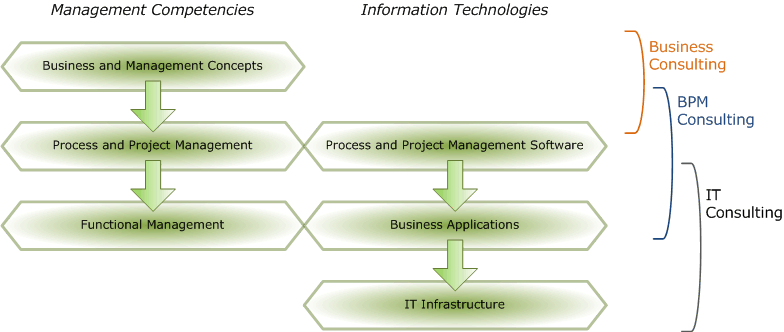
But to do so the consultants should understand each other’s domain and know what to expect from each other. Unfortunately, in my experience it isn’t so today. To start with, there is a gap between business consulting and BPM consulting:
- Business consultanting teaches how to set the right objectives and build a sound strategy.
- BPM consultants know how to discover a business process, how to make it executable and connect it with existing enterprise systems, how to launch the continuous improvement cycle.
In short, the former know well “what for” but little about “how” and vice versa for the latter. Although most business consultants are aware of what business processes are and recognize their role in business transformation, they have little knowledge about current BPM practice. It’s hard for a customer to tie one with another hence he would like to see more mutual understanding between business consulting and BPM consulting.
Perhaps BPM consultants should resolve the issue by mastering in business consulting, too? No, this idea should be rejected:
- It’s definitely helpful for a BPM consultant to get some knowledge of the related domain. For example, we successfully use the value chain concept and principles of the Theory of Constraints in our BPM projects. But using something differs from knowing it at professional consultant’s level. A professional consultant should not only know some concept from top to bottom but also have a broad background to be able to advice the methodology most suitable for a particular customer. It’s unrealistic to reach this level for a BPM consultant.
- Let’s not forget that BPM consultant should be educated in related IT areas: BPMS, business rules, SOA, web technologies, enterprise architecture, database and business applications development.
- Even if there was such a super-consultant knowledgeable in BPM, IT and business concepts then how would a potential customer treat him? According to my observations, super-specialists are treated with suspicion - customers figure out intuitively that if his knowledge is so broad then it must not be deep. So his talent and work will not be appreciated.
There is also a gap between BPM consulting and IT consulting. Sad but true: IT professionals and even IT managers often catch the BPM ideas slower than top managers and business people in general.
It makes no sense to blame the gap between business and IT as long as we did not overcome the consulting gap!
The only way to form a straight-through competence from business strategy to IT via business processes is consultants’ cooperation, formal and informal networks, associations and consulting community. Having this, we would be able to offer e.g. the comprehensive implementation of Lean including training, organizational change, analysis and implementation of key business processes and their connection with existing ERP system.
There is certain progress on this way: for example, the interest to BPM conferences continues to grow. Business and IT consultants coming there get an idea of what can be obtained from the BPM and from BPM consultants.
- The weak point of business consulting is the practical implementation of concepts. And this is exactly what we - the BPM specialists - have experience in and are ready to help with.
- IT, located on the lower floors of the competnce stack, face the reverse problem of infrastructure projects justification. Business doesn’t need ERP and SOA on their own, it needs business processes running predictably and efficiently. BPM links one to another so there is great potential for cooperation too.

